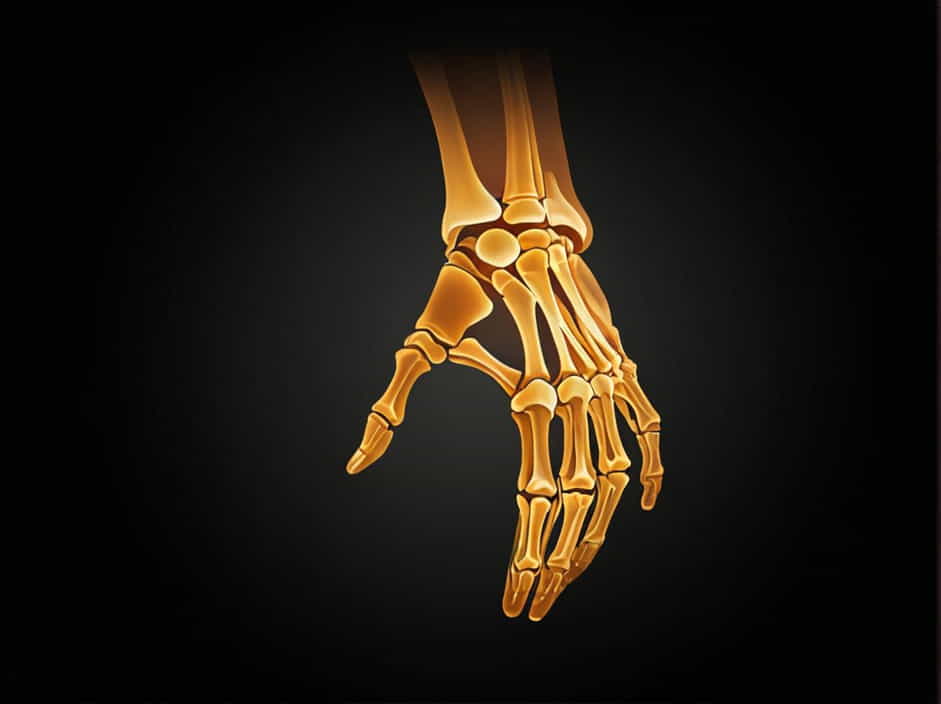The metacarpal bones are an essential part of the human skeletal system, playing a crucial role in hand movement and dexterity. However, there is a common misconception that the metacarpals are located in the ankle, which is incorrect. The metacarpal bones are found in the hand, while the metatarsal bones are in the foot.
Understanding the structure, function, and importance of the metacarpal bones helps in recognizing their role in daily activities, sports, and medical conditions affecting the hand. This topic explores their anatomy, function, differences from metatarsals, and common injuries.
What Are the Metacarpal Bones?
The metacarpals are the five long bones in the hand that connect the wrist (carpals) to the fingers (phalanges). They form the palm and play a key role in grip, movement, and hand function.
Each metacarpal bone is numbered from 1 to 5, starting from the thumb (lateral side) to the little finger (medial side):
- First metacarpal – Associated with the thumb.
- Second metacarpal – Supports the index finger.
- Third metacarpal – Connects to the middle finger.
- Fourth metacarpal – Linked to the ring finger.
- Fifth metacarpal – Supports the little finger.
Anatomy of the Metacarpal Bones
Each metacarpal consists of three main parts:
- Base – The proximal end that connects to the carpal bones of the wrist.
- Shaft – The long, slender middle portion of the bone.
- Head – The distal end that forms the knuckles, articulating with the phalanges.
Function of the Metacarpal Bones
The metacarpal bones serve several important functions, including:
1. Supporting Hand Structure
- The metacarpals provide the framework for the palm, ensuring stability and flexibility.
2. Enabling Hand Movement
- They work with the carpals, phalanges, and muscles to allow gripping, pinching, and fine motor control.
3. Absorbing Impact and Stress
- The metacarpals help distribute force and pressure during activities like writing, lifting, and sports.
Common Misconception: Are the Metacarpals in the Ankle?
A frequent mistake is the belief that metacarpal bones are in the ankle. This confusion arises from the similarity between metacarpal bones (hand) and metatarsal bones (foot).
Metacarpals vs. Metatarsals: Key Differences
| Feature | Metacarpal Bones (Hand) | Metatarsal Bones (Foot) |
|---|---|---|
| Location | Found in the palm of the hand | Found in the arch of the foot |
| Function | Provides hand movement, grip, and dexterity | Supports body weight, balance, and walking |
| Bones Connected To | Carpals (wrist) and phalanges (fingers) | Tarsals (ankle) and phalanges (toes) |
| Flexibility | More flexible and mobile | More rigid for weight-bearing |
Common Metacarpal Injuries and Conditions
Since the hands are constantly in use, the metacarpals are prone to injuries due to falls, sports, and repetitive movements. Some common conditions include:
1. Metacarpal Fractures
- Boxer’s Fracture – A break in the fifth metacarpal, often caused by punching a hard surface.
- Bennett’s Fracture – A fracture at the base of the first metacarpal (thumb), common in athletes and motor accidents.
- Rolando’s Fracture – A more severe fracture of the thumb’s metacarpal, often requiring surgery.
2. Arthritis in the Metacarpals
- Osteoarthritis – Wear and tear of the cartilage, leading to pain and stiffness.
- Rheumatoid Arthritis – An autoimmune disease that affects joint movement and function.
3. Metacarpal Stress Injuries
- Repetitive strain injuries (RSI) from activities like typing, weightlifting, and playing musical instruments.
4. Metacarpal Dislocations
- Can occur due to trauma or severe impact, affecting hand alignment and movement.
Diagnosis and Treatment of Metacarpal Injuries
If a metacarpal injury occurs, proper diagnosis and treatment are essential for recovery.
1. Diagnosis
- X-rays are used to detect fractures or dislocations.
- MRI or CT scans may be required for detailed imaging.
2. Treatment Options
- Rest and Immobilization – Using a cast or splint to stabilize the bones.
- Physical Therapy – Helps restore strength and flexibility.
- Surgery – Required for severe fractures or misaligned bones.
How to Keep Metacarpal Bones Healthy
Maintaining strong and healthy metacarpals is essential for hand function. Here are some preventive measures:
1. Strengthening Exercises
- Perform grip exercises using a stress ball.
- Do wrist and finger stretches to maintain flexibility.
2. Protect Hands During Activities
- Wear protective gloves during sports or manual labor.
- Avoid excessive force when punching or lifting heavy objects.
3. Maintain Proper Ergonomics
- Use an ergonomic keyboard and mouse to reduce strain.
- Take breaks when using hands for prolonged periods.
4. Eat a Bone-Healthy Diet
- Consume foods rich in calcium, vitamin D, and magnesium for bone strength.
5. Seek Medical Attention for Pain
- If you experience swelling, pain, or difficulty moving fingers, consult a doctor promptly.
The metacarpal bones are an essential part of the hand’s skeletal structure, allowing for movement, dexterity, and grip strength. They are not found in the ankle—a common misconception caused by their similarity to metatarsal bones in the foot.
Understanding the difference between metacarpals and metatarsals, along with common injuries and prevention methods, can help maintain healthy hand function. Whether you are an athlete, musician, or someone who uses their hands extensively, taking proper care of the metacarpal bones is crucial for long-term mobility and strength.
